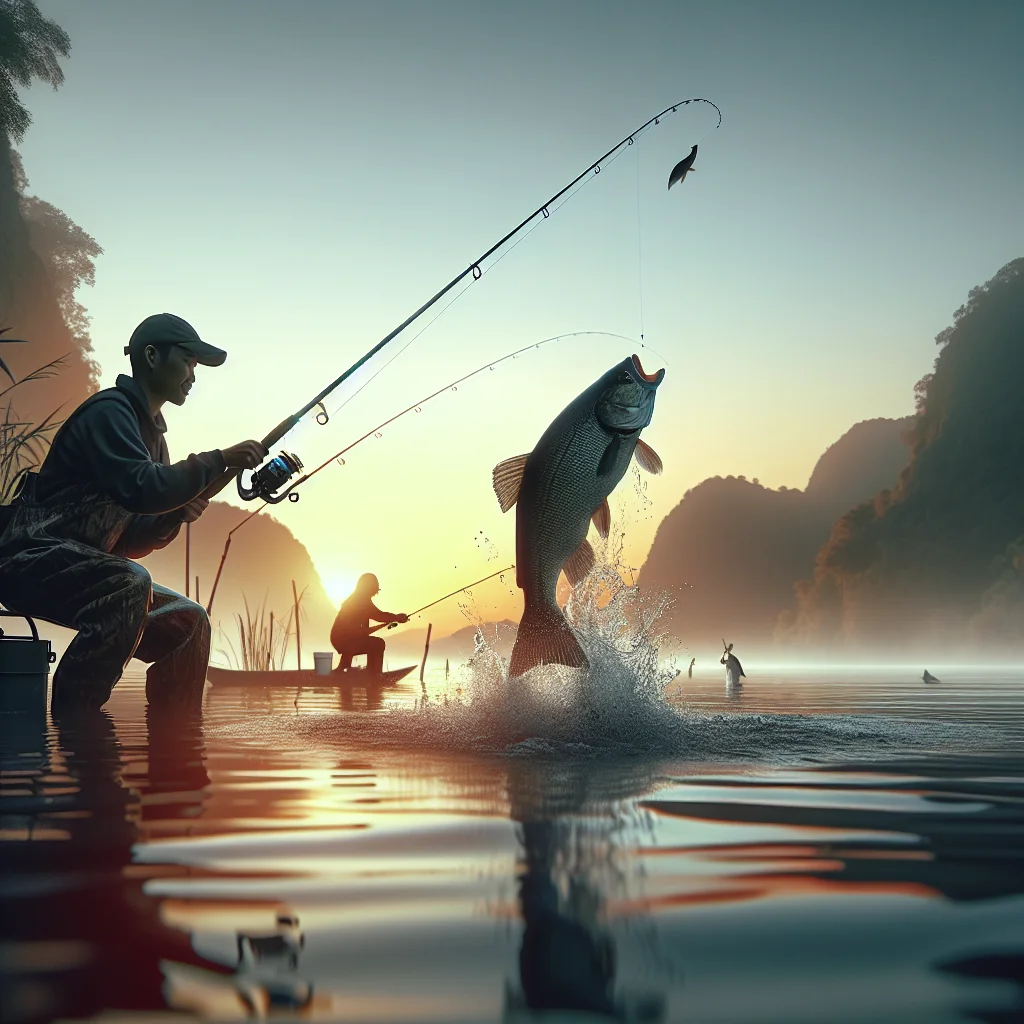Fishing Responsibly: Strategies for Sustainable Practices
May 15, 2025

Introduction
Sustainable fishing is more vital than ever, considering the impact of overfishing and environmental degradation on aquatic ecosystems. As fishing enthusiasts, it’s our responsibility to learn and adopt practices that not only enhance our experience but also protect fish populations and their habitats. This article explores actionable sustainable fishing techniques you can implement today.
Understanding Sustainable Fishing
Sustainable fishing refers to practices that prevent overfishing and minimize damage to marine ecosystems. According to the World Wildlife Fund, sustainable fishing aims to ensure healthy fish populations and preserve the marine environment for future generations. This approach prioritizes both the longevity of fish species and the overall health of the aquatic ecosystem.
Key Principles of Sustainable Fishing
1. Catch Limits and Size Restrictions
Understanding and adhering to catch limits set by local regulations is a foundational aspect of sustainable fishing. Each region typically has guidelines on the number of fish you can catch and minimum size limits to ensure juvenile fish have the opportunity to mature and reproduce. Ignoring these regulations not only harms fish populations but can also incur hefty fines.
2. Selective Fishing Gear
Using the right gear can significantly reduce bycatch—unintended capture of non-target species. Tools such as circle hooks, which hook fish in the corner of the mouth, can greatly reduce injury rates and increase survival chances for released fish. Additionally, using barbless hooks can make it easier to release fish quickly and safely.
3. Seasonal Fishing
Participating in fishing only during certain seasons helps fish populations recover and maintain healthy breeding cycles. Seasonally closed fishing areas are established to allow fish to spawn uninterrupted. By respecting these closures, anglers contribute to the growth of fish populations.
4. Proper Handling and Release Techniques
The way anglers handle fish can greatly affect their survival rates after being released. Minimizing the time a fish is out of water, using wet hands to handle them, and avoiding squeezing can all help ensure that released fish survive. Resources such as the National Oceanic and Atmospheric Administration (NOAA) provide guidelines for best practices to handle fish during catch and release.
5. Educating and Advocating for Sustainability
As responsible anglers, we should advocate for sustainable practices within our communities. Educating fellow anglers about the importance of conservation can create a broader impact. Initiatives such as catch and release programs and community cleanup events can help mobilize collective action toward preserving our waters.
Innovative Technologies Supporting Sustainable Fishing
Technology is playing a critical role in advancing sustainable fishing practices. Here are some examples of how innovation is making a difference:
1. Smart Fishing Gear
Modern fishing gear equipped with sensors and GPS technology allows anglers to monitor fish populations and avoid overfishing. Devices that track environmental conditions can also help identify the best times and locations to fish, minimizing waste and maximizing efficiency.
2. Fish Aggregating Devices (FADs)
FADs are artificial structures that attract fish, allowing for more targeted fishing that reduces bycatch. These devices help gather fish in specific areas, leading to more efficient catches while reducing the accidental capture of endangered species.
3. Aquaculture and Sustainability
Sustainable aquaculture practices are emerging as a viable alternative to traditional fishing. Fish farms that use methods such as recirculating aquaculture systems minimize environmental impact and provide communities with a steady supply of fish without putting pressure on wild populations.
Global Case Studies of Sustainable Fishing Practices
Examining successful international initiatives can inspire local actions. Here are a few notable examples:
1. New Zealand’s Quota Management System
New Zealand has implemented a quota system where fishermen are allocated a specific amount of catch per year. This ensures that fish stocks are monitored closely, and sustainable practices are followed, ultimately leading to healthier fish populations.
2. Marine Protected Areas (MPAs) in the Caribbean
The Caribbean has established several MPAs that restrict fishing in certain areas, allowing ecosystems to recover and thrive. Local communities engage in conservation efforts, bringing awareness to sustainable fishing practices while maintaining their cultural link to the sea.
Conclusion
Adopting sustainable fishing practices is essential for preserving our aquatic ecosystems while enjoying the thrill of fishing. By educating ourselves on responsible techniques, understanding our role in fish conservation, and utilizing innovative gear, we can ensure that future generations of anglers continue to enjoy the waters we cherish. Let us embrace these practices to foster a more sustainable fishing culture, benefitting both our passion for the sport and our planet.
Back